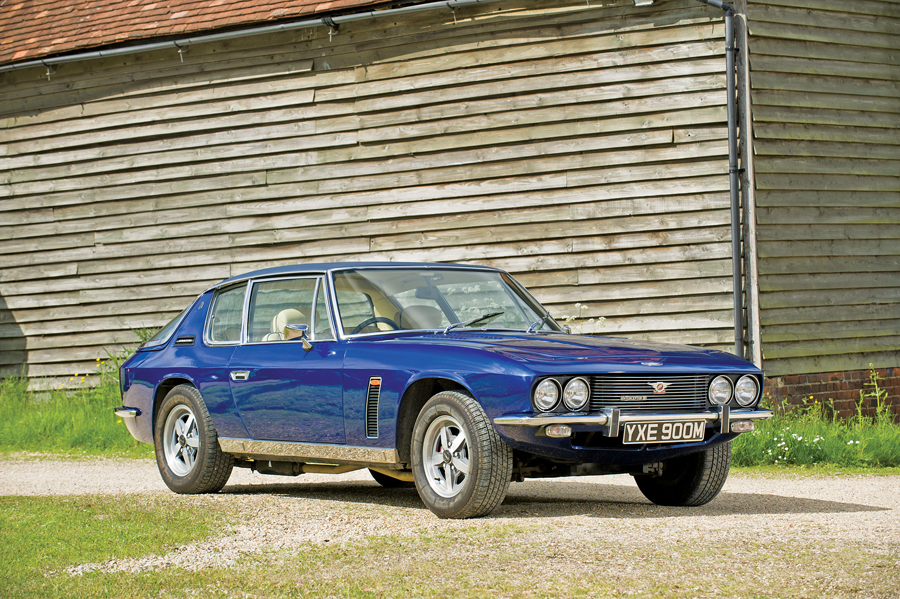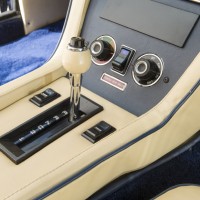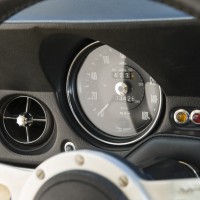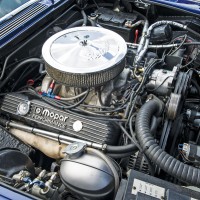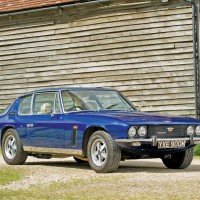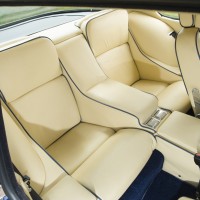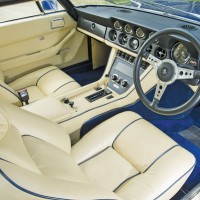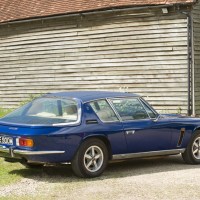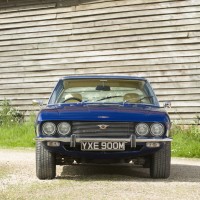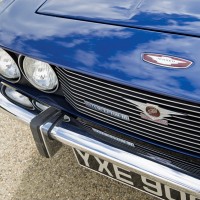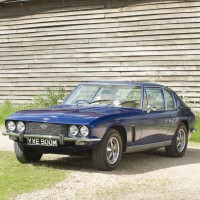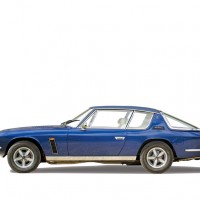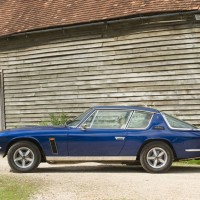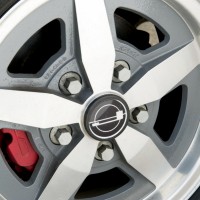SCM Analysis
Detailing
| Vehicle: | 1974 Jensen Interceptor Series III Sports Saloon |
| Years Produced: | 1966–76 (SIIIs 1971–76) |
| Number Produced: | 6,408 (4,255 SIIIs) |
| Original List Price: | £6,981 ($10,877 in August 1973) |
| Tune Up Cost: | $150 |
| Distributor Caps: | $25 |
| Chassis Number Location: | On plate on inner wing or door post, and stamped into chassis front crossmember |
| Engine Number Location: | Right front of block |
| Club Info: | Jensen Owners’ Club. Membership: 26 Foster Park Road, Denholme, Bradford, W. Yorkshire, BD13 4BE, UK |
| Website: | http://www.joc.org.uk/ |
| Alternatives: | 1964–67 Gordon Keeble, 1965–73 AC 428, 1967–72 Aston Martin DBS, 1967–73 Maserati Ghibli |
| Investment Grade: | B |
This car, Lot 421, sold for $69,213, including buyer’s premium, at Bonhams’ Summer Classic sale near Oxford, England, on June 20, 2015.
Though we’ve hardly noticed until now, Interceptors have been gently creeping up in value, in much the same way as the Aston Martin DBS began its upturn two years ago. But as a contemporary of that car — and the similar Anglo-American big-displacement V8 coupe the AC 428 — the question is: Why have Interceptors been so cheap? Fifteen years ago, a mate bought a running — though admittedly slightly tatty — SI for £1,000 and daily drove it for a year until he could stand the (English: $7 a gallon) fuel bills no more.
The cost of restoration is the most likely factor. In common with the DBS, these cost far more to restore than they have been worth. And though that balance is gradually equalizing, it takes a few brave souls to put their heads over the parapet and decide that this is a car worth preserving, even though they’ll lose money, before the world takes notice and values start to harden. And that’s just what appears to be happening now.
Stonk, handling and good looks
One thing that’s never gone away is that these are great cars to drive: loads of stonk, a fabulous noise, still-iconic looks and better handling than you’d hope from a basic chassis using a cart-sprung rear end.
Generations of schoolboys lusted after them when they were new, had the Dinky toy, and now some of those 50-somethings can afford them. I know this, coming from the same demographic, though sadly not in that “some” category.
There’s another factor that might help explain why more folks are choosing to preserve standard cars, and that’s the increasing number of upgraded, improved or modernized versions out there, usually with LS Chevy power and sometimes with independent rear suspensions, all with working air conditioning. Each one of these creations requires a donor, and that’s one less original car.
So far, each of these brave new ventures has sunk after just a few cars have been completed, leaving a bunch of mongrels with no backup. I await a venture to return modified cars to standard.
Already restored
No such worries with this car (chassis number 22409410 makes it a RHD home-market Series 4 saloon), as it had already been restored, and that can always be a big job due to rust. The main chassis on these is two big tubes which rarely come to any harm, but rot gets into all the complicated sheet metal and the outriggers supporting it, and there’s a lot of Interceptor to dismantle before you get back to the structure.
The good news is that just about all mechanical parts are available from the likes of ReJen, Martin Robey and Cropredy Bridge Garage.
This car showed a few patches welded into the floors, but the sills and the rest of the structure looked rust-free and solid.
The body was very straight, the paint even, the chrome work and trim (including the massive fabricated aluminum front grille) all in good shape, and the alloy wheels had been very sharply refinished. However, for some reason, someone had painted the front brake calipers red — an old boy-racer trait.
Inside, it had been retrimmed with new leather and carpets, and the dash was very sharp, with no cracks or scratches in the plastic molding; later cars got wood veneer. Also, the eyeball vents still showed their chrome finish which earlier cars often lose, leaving unattractive ivory-colored plastic for which replacements are not available. It wore an alloy three-spoke steering wheel — an improvement on the original heavy-looking plastic two-spoke design.
Though emissions regs had robbed the 440 of around 25 bhp by the time the Series 4 cars appeared, it sounded great when fired up, too, with a more ambitious exhaust than standard.
Mopar muscle
Interceptors used the 383-ci engine until 1971, and when that motor was discontinued, Jensen opted to go with the 440-ci engine in 305-bhp 4-barrel trim, though in 1971 232 cars were made with the 335-bhp Six Pack version.
Our subject car, dressed with fancy cast rocker covers and an Edelbrock chrome pancake filter, had 3,428 miles covered since the 2006/2007 restoration, which the catalog claims included a motor rebuild, so I’m not sure why it needed a refresh with new rings and bearings since.
There was no indication of who did the body or motor work, but it was very likely to have been Cropredy Bridge Garage, a leader in the Interceptor world, and it’s also very likely to have cost more than the price paid for the car here.
Worth the price paid
So, this was around half the price of a comparable restored DBS, which is a little breathless by comparison, and something like a third to a quarter of the price of an AC 428 in similar condition.
Although it looked relatively expensive in the Interceptor terms that we have been used to, check the classifieds and you’ll find that dealers are asking 50% more for cars of the same caliber. All that boils down to the conclusion that this car, while not a total steal, looks a very sensible buy against the future. ♦
(Introductory description courtesy of Bonhams.)
